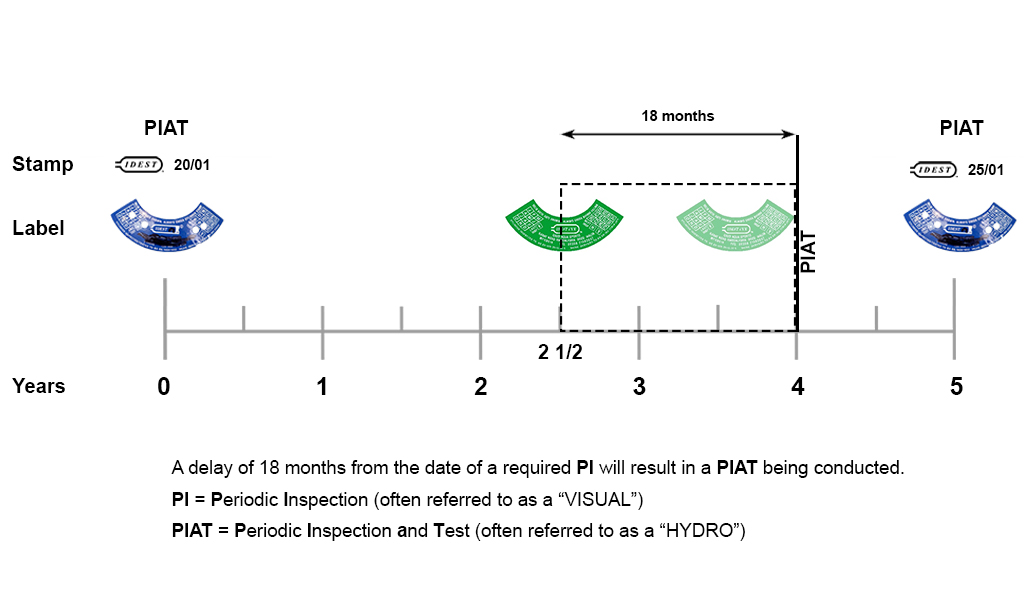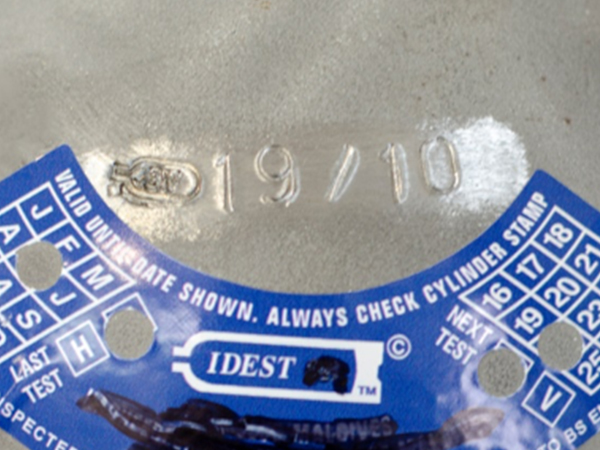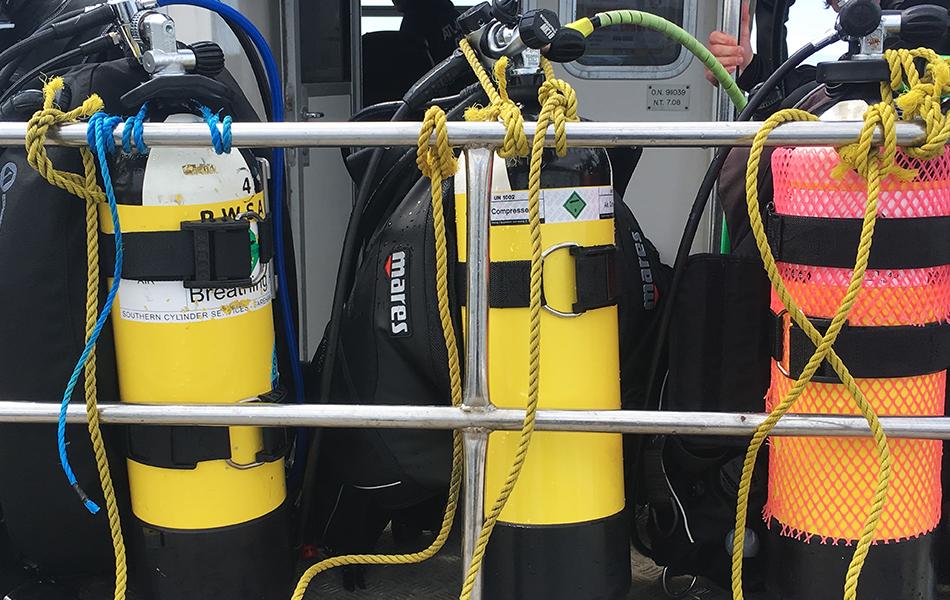
IDEST remind all the cylinder testing regulations which have been made over the last few years, while also confirming protocol for when a cylinder passes its visual test due date.
When a cylinder comes into a test centre and it has passed its due date for a visual, many centres are telling customers that it must have a hydraulic test (hydro). This is not necessarily correct.
Some years ago, IDEST spoke with the incumbent Head of HSE about this situation; he gave us some words of wisdom that IDEST passes on today.
From the date of any Periodic Inspection and Test (PIAT), or 'hydro', the Standards state that a cylinder has to be re-hydro tested at the five-year anniversary of the previous one. The Standards also say that the cylinder should undergo a Periodic Inspection (PI) after two and a half years, to check it is fit to be used until the next PIAT.
If a cylinder misses a PI, or a 'visual' as most people know it, then common sense should prevail. If the cylinder is within a year to six months of the next Hydro then bring forward the hydro. When this situation happens, the five-year interval will commence from the date of the new hydro rather than the original one.
Conclusion: if the over-run of the PI is up to eighteen months then a PI can quite legitimately be carried out. If the internal inspection shows potential problems then, by all means, have a hydro.
IDEST and changes since 2018
2018 saw the publication of a new Standard for inspecting and testing of diving and breathing gas cylinders. BS EN ISO 18119:2018 was published in October of that year and runs concurrently with the existing Standards BS EN 1968:2002 and BS EN 1802:2002 until Dec 31 2022 when the original two standards will cease to be current. At the same time, there have been several changes to the way cylinders are stamped and labelled.
IDEST issued the following statement regarding visual inspections on 26th September 2019.
After due consideration and consultations between IDEST, ASSET and HSE, it has been agreed that the practice of stamping diving and breathing gas cylinders to indicate a visual inspection (Periodic Inspection, PI) has been carried out, will now cease. This will apply to all cylinders up to and including the 30-month inspection.
At present when a cylinder is frequently visually inspected because of how it is used - either every six months or on an annual basis - the shoulder is stamped with a 'V' and the relevant date. It is therefore quite possible that a perfectly good cylinder (probably small in size) will be taken out of service prematurely because there is simply no more room left on the shoulder to stamp.
Even if a large cylinder is inspected every 6 months and stamped, this will allow only a limited number of stamps to fit onto the shoulder.
Hydraulic tests (PIAT)

All cylinders will be metal stamped on the cylinder shoulder at each successful Periodic Inspection and Test (PIAT).
The stamp will consist of the test centre mark along with the YEAR and the MONTH that the test was done - as shown in the picture.
The blue quadrant label, used by IDEST Test Centres, will also be put on the cylinder shoulder near the metal stamping. It will show an 'H' on the left-hand side to indicate a hydraulic test has been conducted. On the right-hand side a letter 'V' will be readable to indicate that the next visit will involve a visual inspection.
Visual inspections (PI)
Two and a half years or less, depending on a risk assessment or diving regime, after the hydraulic test, a Periodic Inspection (PI) will be needed. The centre technician will remove the cylinder valve and inspect the cylinder both externally and internally for damage and corrosion. The valve will be dismantled, cleaned and reassembled with a new service kit. Providing the cylinder and valve are in good condition and have passed the inspection, the valve will be replaced in the cylinder and torqued up to the correct tension.
In this case, the cylinder will not be metal stamped but a green quadrant label will be stuck to the shoulder of the cylinder. Some IDEST centres may continue to use the blue sticker for this inspection until stock runs out. Either of these quadrant labels will show a 'V' on the left-hand side and the month and year of the next inspection will be punched out. On the right-hand side, a letter 'H' will be left to indicate that the next visit will require a hydraulic test (PIAT) again.
The latest design of IDEST quadrant labels are made from a 'tamper-evident' material and any attempt to remove the label will result in the labels breaking up into small pieces. If the labels are of the older material and is removed after a visual inspection, the advice is to return to the test centre and get a replacement fitted or have the test certificate handy to show a centre filler.
BSAC members save £££s every year using BSAC benefits.
Join BSAC today and start saving on everything from scuba gear, diving holidays and diver insurance, to everyday purchases on food, online shopping and retail with BSAC Plus. Click to join BSAC today.






